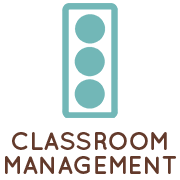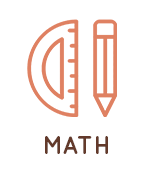“If IBL [inquiry-based learning] is effectively implemented by a skilled teacher who is willing to teach, reteach, and model patterns of thinking, then students will be involved in a classroom culture that reinforces collaboration, problem solving, reflection, differentiation, motivation, and above all, transfer of knowledge and skills to new situations in and beyond the classroom. With continuous professional development, collaboration with experienced inquiry-based educators, and with careful planning and gradual implementation of IBL units, students can reap the benefits of inquiry in the classroom: A classroom that nurtures curiosity, establishes a culture of deep learning, and creates engaged and motivated learners.”
—Gholam, A. P. “Inquiry-Based Learning: Student Teachers’ Challenges and Perceptions” 1
When it comes to teaching upper elementary students, there’s no doubt that every educator wants the same thing: to give their kiddos the necessary tools to grow into a successful member of society. There are no shortcuts in life or in the classroom, but inquiry-based learning is certainly the next best thing for everyone involved. IBL is incredibly effective for stimulating curiosity and critical thinking, as well as “collaboration, problem solving, reflection, differentiation, and motivation,” as Gholam so eloquently stated above.
Every classroom is different, yet the benefits of inquiry-based learning remain the same. In fact, IBL is especially effective in diverse classroom with varying learning needs. We already know that differentiation is the key to unlocking concept mastery, and IBL takes that to another level by allowing every student to feel in control of their own learning and build the confidence necessary for even struggling learners to succeed.
With that being said, I’d like to welcome you to the first in a series of round-ups surrounding inquiry-based learning and its strategies! IBL is so important (and versatile!) that it justifies its own series. Before we launch into this month’s strategies, however, let’s take the time to examine the essence of IBL to make sure we’re all on the same page.
The Essence of Inquiry-Based Learning
Inquiry-based learning is “a student-centered approach driven by students’ questions and their innate curiosity” (Gholam 2019). It’s a way to work with students’ natural drive, not against it, in order to maximize learning. In modern education, IBL often takes the form of STEM projects or PBL, where a question is posed by the teacher and students are given (mostly) free reign on developing a strategy to answer that question. You can see more examples of these projects in this blog post.
However, keep in mind that not all classroom projects are worthy of the title “project-based learning.” For more information on differentiating between quality PBL and “fluff,” take a look at my comparative blog post here!
By giving students a modicum of control over their educational experience, you empower them to feel confident in their learning and build upon their successes to become lifelong learners. Besides, IBL is easy for you to implement, too, and once your students are familiar with the concept, it may actually be less work for you in the long run. Sounds like a win for everyone, right?
Inquiry in Math: Exploring Real-World Problems
Although inquiry-based learning initially sounds like something best reserved for STEM projects, there are plenty of math applications as well. For instance, every time you explore a real-world application of a math concept with your upper elementary students, there’s an opportunity for IBL!
For example, you can use resources such as my Fraction Feast PBL activity to provide students with an enriching experience that relates to the real world while making those abstract math concepts more concrete and, as a result, more easily understood. Keep engagement high and captivate their attention by using activities that speak to students’ needs.
The theme of inquiry-based learning is letting students take the wheel and exploring in their own way in order to build higher-order thinking. Real-world problems and PBL activities certainly encourage this via engaging critical thinking skills, problem-solving, and collaboration with others if you choose to spring for group activities.
Remember, though, that students will still need to be guided from time to time, especially as they start out with IBL. Your role during IBL is to provide support for students, and it’s also a great time for one-on-one interventions if needed. Of course, be sure to scaffold with students rather than rescuing them.
Inquiry in Science: Student-Led Experiments
Student-led experiments are a phenomenal way to implement inquiry-based learning in your classroom. In fact, plenty of regular ol’ hands-on projects can be tweaked into an IBL experience easily! For example, chances are you employ some variety of hands-on learning when it comes to exploring plants in your classroom, such as growing beans. To swap this project into IBL, simply provide your students with the question “Under what conditions would a plant grow best?” or any other question that fits your criteria. Then, allow students to choose from a plethora of options for their plant and conduct the necessary research.
In reality, when you employ inquiry-based learning in your science block, you’re simply encouraging students to follow the scientific method: question (provided by you), hypothesize, experiment, and draw conclusions. Of course, if you ever need any help coming up with engaging experiments for upper elementary… I’ve got you covered!
Differentiating Inquiry-Based Learning
Ultimately, you still have students at differing levels in your classroom, so it’s only natural that you’ll need to make adjustments in order for every kiddo to thrive. There are plenty of ways to diversify inquiry-based learning, however, such as providing varying complexity levels in questions or allowing multiple presentation formats for students to share their results (e.g., oral, written, through art, and so on).
In addition, make sure to mix it up! Instead of always doing the same experiment format, try providing students with a technological project, such as those compiled in this blog post. Or, if you have students who seem to be less curious or more disinterested than others, try stimulating curiosity before launching into your experiments–after all, inquiry-based learning works under the assumption that your kiddos are ready to explore, so you definitely want to appeal to their interests!
You can also take note of which kinds of projects seem to resonate with your students more than others. Do they enjoy group reading? Make literary STEM projects! Are your kiddos on the artistic side? Opt for STEAM projects instead! It’s all up to you and your knowledge of how your classroom operates best.
Collaborative Inquiry
The only thing better than inquiry-based learning is doing it as a group! Build cooperation skills, social skills, and encourage students to share diverse perspectives, all while reaping the usual benefits of IBL. The real world is a very teamwork-oriented place; even as a teacher, I’m willing to bet that you still collaborate with your colleagues despite leading your classroom solo. It’s important to help students achieve lifelong success!
Essentially, whenever you can group your students up without causing too much off-task chit-chat, go for it! There are plenty of ways to group up your classroom, too, without it growing too stale. It’s also important to ensure you’re grouping up students effectively–you don’t want one leader-oriented student dictating the direction of the entire group, after all. But your kiddos would never do that, right? 😉
There are plenty of group-based activities, such as research projects on historical events, that are excellent for inquiry-based learning. To ensure all students are participating evenly, instruct each member of the group to explore a different aspect of the concept at hand, then have the group collaborate to create a comprehensive presentation.
Ultimately, kiddos are happy to indulge their natural curiosity and penchant for absorbing new information, and it makes your job a ton easier when they’re engaged and excited to learn! Inquiry-based learning strategies are absolutely transformative in the classroom and, as Gholam said, there are a plethora of benefits to be had. From critical thinking to collaboration to reflection and motivation, IBL is a surefire way to make the most out of what limited classroom time you have.
Every classroom is unique, as is each child within it. You know what works for your students! Differentiation is the key to success, and inquiry-based learning helps you get there. Adapting these strategies to your classroom is bound to boost your engagement levels off the charts, and your kiddos will be glad you did.
Keep an eye out for next month’s iteration of instructional strategy round-ups. You won’t want to miss ’em! In the meantime, though, I want to know: what variations of these strategies have you tried out in your classroom? Share your experiences in the comments!

- Gholam, A. P. (2019). Inquiry-Based Learning: Student Teachers’ Challenges and Perceptions. Journal of Inquiry and Action in Education, 10 (2). Retrieved from https://digitalcommons.buffalostate.edu/jiae/vol10/iss2/6 ↩︎

















